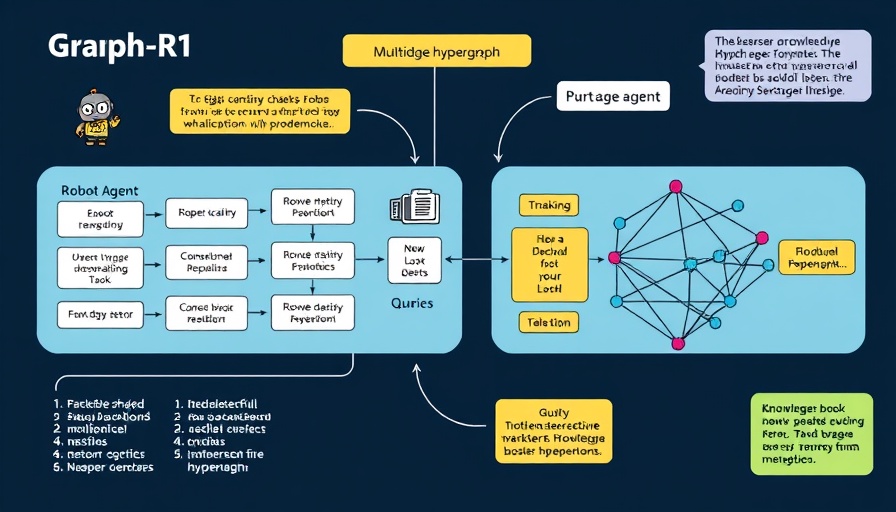
Embracing AI Agents: The Business Transformation of 2025
The evolution of artificial intelligence is at a pivotal moment, especially for small and medium-sized businesses (SMBs) looking to leverage technology for efficiency and scalability. By 2025, we can expect AI agents to play a transformative role in shaping how businesses operate, innovate, and connect with customers. In this article, we will explore the five key trends in AI agents, elucidating their implications for SMBs and how embracing this technology can lead to greater productivity and streamlined processes.
Agentic RAG: Tailoring AI Workflows for Specific Needs
One of the most significant advancements in the AI field is the emergence of Agentic Retrieval-Augmented Generation (RAG). This technology allows AI agents to not just pull data but also understand the context, track user interactions over time, and execute complex multi-step tasks—all crucial for improving workflows in SMBs.
The tailored approach of Agentic RAG means that businesses can create customized workflows that align with their specific operational needs. This flexibility is vital, as it helps in synthesizing results from various data points and delivers accurate outputs that enhance decision-making.
Voice Agents: Revolutionizing Communication and Interaction
The use of voice agents is skyrocketing, giving businesses a natural language option to interact with customers and internal teams. With seamless integration of speech-to-text (STT) and text-to-speech (TTS), these voice agents provide a more engaging and intuitive interface.
Imagine having a voice agent that manages appointments, interprets natural queries, and even engages in live conversations, making requests and providing updates based on company databases. This level of interactivity not only enhances customer experience but also improves internal communication, fostering a responsive and efficient business environment.
AI Agent Protocols: Creating Cohesion Amid Complexity
As the landscape of AI agents becomes more intricate with multiple agents working in unison, the establishment of robust coordination protocols becomes essential. Protocols such as the Model Context Protocol (MCP) and Agent Communication Protocol (ACP) are fundamental in ensuring that information flows smoothly among different AI systems.
For SMBs, this means reducing redundancy, improving data accuracy, and allowing different agents to collaborate effectively. Such interconnectedness empowers businesses to scale their operations without the bottlenecks that typically accompany growth.
Future Predictions: A Look Ahead at AI Evolution
Looking toward the future, the role of AI agents will only expand. Businesses that are early adopters of these technologies will likely dominate their respective markets due to enhanced operational efficiencies and superior customer engagement. Predictions suggest an evolution towards even more intelligent AI systems that will require less supervision and improve upon their capabilities through machine learning and real-time feedback.
Actionable Insights: What SMBs Should Do Now
For small and medium-sized businesses, it’s time to strategize on integrating AI agents into everyday operations. Start by identifying areas where automation could alleviate mundane tasks or enhance customer interactions. Investing in voice agents and exploring retrieval-augmented generation options will provide a competitive edge moving into 2025.
Additionally, maintaining an open mindset towards ongoing technological shifts will prepare SMBs to adapt successfully. Networking with tech providers specializing in AI or joining user groups can also provide valuable insights into best practices and emerging trends.
Empower Your Business: Take the Leap into AI
The future of AI agents is bright and brimming with opportunities for SMBs. As businesses transition into this new era, embracing these technologies will not just facilitate growth but also foster a dynamic and responsive operational framework. Begin your journey into AI today and reap the rewards of this transformative shift.
 Add Row
Add Row  Add
Add 



Write A Comment